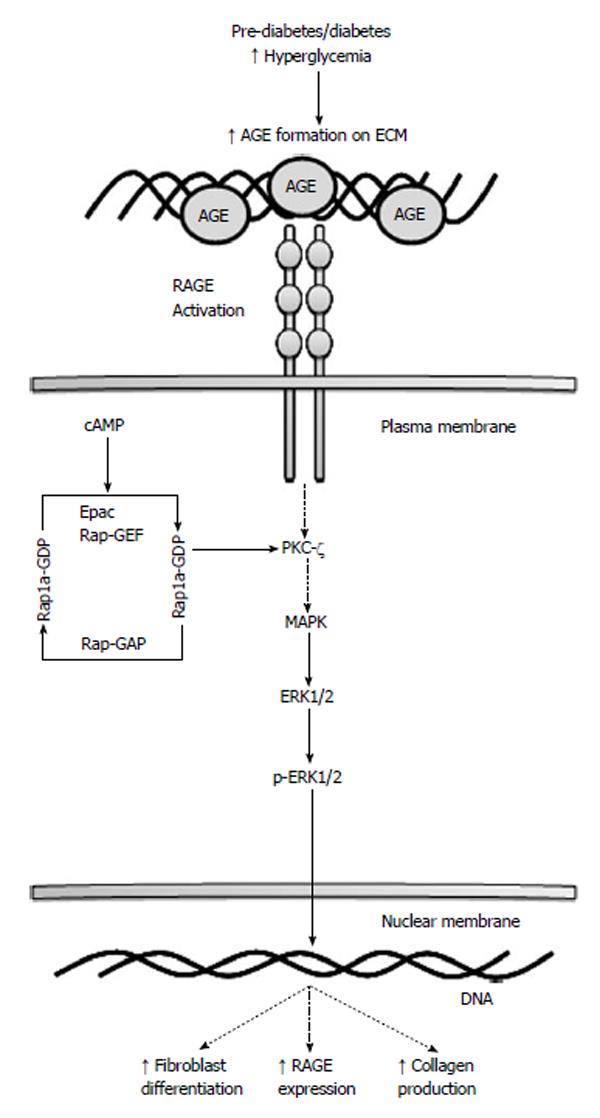Copyright
©2014 Baishideng Publishing Group Inc.
World J Diabetes. Dec 15, 2014; 5(6): 860-867
Published online Dec 15, 2014. doi: 10.4239/wjd.v5.i6.860
Published online Dec 15, 2014. doi: 10.4239/wjd.v5.i6.860
Figure 1 Rap1a in advanced glycation end product/the receptor for advanced glycation end product signaling.
A potential role for Rap1a as a molecular switch mediating the AGE/RAGE signaling pathway in type 2 diabetes mellitus. Increased Rap1a activity may stimulate PKC-ζ to further promote matrix accumulation, RAGE expression and fibroblast differentiation to myofibroblasts. AGE: Advanced glycation end product; RAGE: The receptor for AGE; ECM: Extracellular matrix; cAMP: Cyclic AMP; GAP: GTPase-activating protein; PKC-ζ: The ζ isotype of protein kinase C; MAPK: Mitogen-activated protein kinase; ERK: Extracellular signal-regulated kinase.
Figure 2 siRNA Rap1a knockdown in diabetic cardiac fibroblasts.
Cardiac fibroblasts were isolated from age-matched 16 wk-old db/wt (non-diabetic) and db/db (diabetic) mice and using siRNA targeted to Rap1a silenced transcription and translation of Rap1a resulting in noticeable decreases not only in Rap1a expression, but also the downstream signaling outcomes RAGE, collagen I, phospho-PKC-ζ and α-SMA protein expression. RAGE: The receptor for the advanced glycation end product; PKC-ζ: The ζ isotype of protein kinase C; α-SMA: α-smooth muscle actin; GAPDH: Glyceraldehyde 3-phosphate dehydrogenase.
- Citation: Zhao J, Randive R, Stewart JA. Molecular mechanisms of AGE/RAGE-mediated fibrosis in the diabetic heart. World J Diabetes 2014; 5(6): 860-867
- URL: https://www.wjgnet.com/1948-9358/full/v5/i6/860.htm
- DOI: https://dx.doi.org/10.4239/wjd.v5.i6.860














